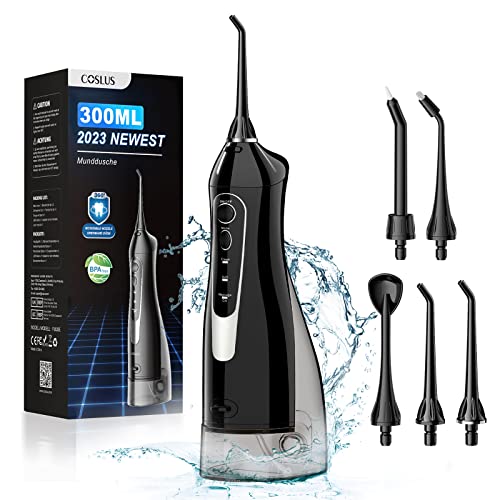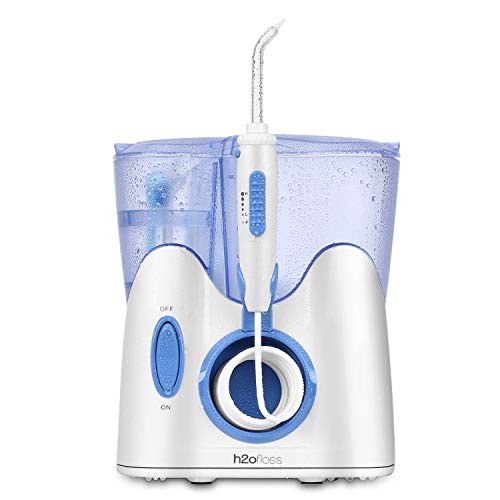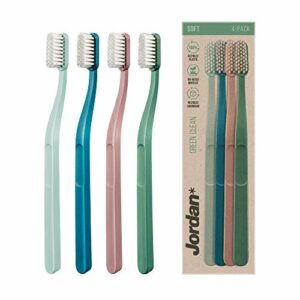Have you ever tried using a water flosser, only to encounter unexpected issues or challenges along the way? We understand the frustration that comes with trying to get the most out of this handy dental tool. That’s why we’re here to help. In this blog post, we’ll be diving into the world of water flossers and providing you with valuable troubleshooting tips. Whether you’re a first-time user or a long-time fan, we want to ensure that your water flosser experience is as smooth and effective as possible. So, let’s explore the common problems and their solutions, so you can confidently achieve optimal oral hygiene.
Achieve healthier gums and a brighter smile with our top-selling water flossers
Common Water Flosser Issues
Water flossers are handy devices that can greatly enhance your oral hygiene routine. They use a steady stream of water to remove plaque and food particles from between your teeth and along the gumline. However, like any electronic device, water flossers can sometimes encounter issues that may affect their performance. In this blog section, we will discuss some common problems that users may encounter with water flossers and offer possible solutions.
Low Water Pressure
One of the most common issues users face with water flossers is low water pressure. This can greatly diminish the effectiveness of the device, making it difficult to clean your teeth properly. Here are some possible causes and solutions for low water pressure:
- Water Tank Level: Ensure that the water tank is filled to the recommended level. Low water levels can result in reduced pressure.
- Clogged Nozzle: Over time, mineral deposits or debris can accumulate in the nozzle, obstructing the water flow. Regularly clean the nozzle or replace it if necessary.
- Water Pump Malfunction: If none of the above solutions work, there may be a problem with the water pump. Contact the manufacturer for troubleshooting or consider getting a professional repair.
Leaking
Another issue that users often encounter is water leakage from the water flosser unit. This can be frustrating and messy. Here’s what you can do to address this problem:
- Check Seals: Inspect the seals and gaskets on the water tank and nozzle. If they are damaged or worn out, they may be causing the leakage. Replace any faulty seals.
- Proper Assembly: Make sure all parts are securely and correctly assembled. Loose connections can result in water leakage.
- Cracked Reservoir: If you notice a crack in the water reservoir or any other part of the unit, it may be causing the leakage. Contact the manufacturer for assistance or consider purchasing a replacement reservoir.
Inconsistent Water Temperature
Some water flossers offer the option to use warm water for added comfort. However, users may encounter issues with inconsistent water temperature. Here’s what you can do to address this problem:
- Warm-up Time: Give the water flosser some time to warm up before using it. The initial water that comes out may not be warm enough, but it should gradually reach the desired temperature.
- Water Heater Malfunction: If the water temperature remains inconsistent, there may be a problem with the water heater. Contact the manufacturer for guidance or warranty support.
Troubleshooting Steps
Dealing with technical issues can be frustrating, but fear not! In this blog section, we will walk you through step-by-step troubleshooting instructions for common problems that you may encounter. Whether you’re experiencing slow performance, connectivity issues, or random errors, we’ve got you covered. So, let’s dive right in and get your system back on track!
Section 1: Slow Performance
Is your device running slower than usual? Here are some troubleshooting steps to help you improve its performance:
- Close unnecessary programs and tabs: Running too many applications can strain your device’s resources. Close any unnecessary programs or browser tabs to free up memory and processing power.
- Check for malware: Malicious software can significantly slow down your system. Run a reputable antivirus scan to detect and remove any potential threats.
- Clear temporary files: Over time, temporary files can accumulate and bog down your system. Use the Disk Cleanup tool (Windows) or the Optimized Storage feature (Mac) to remove unnecessary files.
- Update your software and drivers: Outdated software and drivers can cause performance issues. Ensure that all your applications and drivers are up to date to benefit from performance improvements and bug fixes.
Section 2: Connectivity Issues
Are you experiencing problems connecting to the internet? Follow these troubleshooting steps to get back online:
- Check your network cables and connections: Ensure that all cables are securely plugged in and that there are no visible damages. If using Wi-Fi, make sure you are within range of the router.
- Restart your router and modem: Power cycling your network equipment can often resolve connectivity issues. Simply unplug both your router and modem, wait for a few seconds, and then plug them back in.
- Reset network settings: If you’re still having trouble connecting, try resetting your network settings. On most devices, you can find this option in the network settings menu.
- Update firmware: Outdated router firmware can cause connectivity problems. Visit your router manufacturer’s website and check for any available firmware updates.
- Contact your internet service provider (ISP): If none of the above steps work, it’s possible that the issue lies with your ISP. Reach out to their customer support for further assistance.
Section 3: Random Errors
Are you encountering random errors or crashes? These troubleshooting steps can help you resolve these issues:
- Restart your device: A simple restart can often fix temporary glitches and errors. Give your device a fresh start by powering it off and then on again.
- Update your operating system: Keeping your operating system up to date is essential for stability. Check for any available updates and install them accordingly.
- Reinstall problematic software: If a specific application is causing errors, try uninstalling and reinstalling it. This can resolve any installation issues or corrupt files.
- Check for conflicting programs: Certain applications may conflict with each other, leading to errors. Review your installed programs and remove any potential conflicts.
- Seek professional help: If the issue persists or seems complex, it may be time to consult a professional technician. They will have the expertise to diagnose and resolve more challenging problems.
Remember, troubleshooting can be a trial-and-error process, so don’t get discouraged if the first attempt doesn’t solve the problem. Take your time, follow the steps carefully, and be patient. With these troubleshooting tips and tricks, you’ll be well-equipped to tackle common issues and enjoy optimal performance on your device.
The Importance of Regular Maintenance and Cleaning for Water Flossers
Keeping your water flosser clean and well-maintained is crucial to ensure its longevity and optimal performance. Regular maintenance not only prevents problems but also ensures that you get the most out of your device. In this blog post, we will discuss the importance of maintenance and cleaning for water flossers and provide you with some best practices and recommended cleaning methods.
Why Regular Maintenance Matters
- Prevent Bacterial Growth: Over time, bacteria, plaque, and food particles can accumulate in the water flosser’s reservoir, nozzle, and other components if not cleaned regularly. This can lead to bacterial growth and pose a risk to your oral health.
- Maintain Optimal Performance: Regular maintenance helps to keep the water flosser functioning at its best. Removing any build-up or debris ensures that the water pressure remains consistent, providing effective cleaning and gum stimulation.
- Prolong Lifespan of Your Device: By keeping your water flosser clean and well-maintained, you can extend its lifespan. Regular maintenance reduces the risk of clogging, motor malfunction, or other issues that could lead to costly repairs or replacement.
Best Practices for Cleaning Your Water Flosser
1. Empty and Rinse the Reservoir: After each use, empty the reservoir of any remaining water and rinse it thoroughly. This prevents any stagnant water from remaining and creating an environment for bacterial growth.
2. Clean the Nozzle: Remove the nozzle from the handle and clean it with warm water, using a soft brush or toothbrush to remove any debris or build-up. Ensure the nozzle is completely dry before reattaching it.
3. Descale Regularly: Over time, mineral deposits can build up in the water flosser, affecting its performance. Descaling is necessary to remove these deposits. Follow the manufacturer’s instructions on how to descale your specific model.
4. Replace Nozzles Periodically: Nozzles can wear out or become less effective over time. It is recommended to replace them every three to six months, or as advised by the manufacturer, to maintain optimal cleaning efficiency.
Recommended Cleaning Methods
- Warm Soapy Water: Use a mild dish soap or liquid hand soap to clean the reservoir, nozzle, and other removable parts. Rinse thoroughly to remove any soap residue.
- Vinegar Solution: To descale your water flosser, create a solution of equal parts white vinegar and water. Soak the removable parts in this solution for 5-10 minutes, then rinse thoroughly with water.
- Hydrogen Peroxide Solution: If you prefer an alternative descaling method, you can use a solution of equal parts hydrogen peroxide and water. Soak the removable parts for 5-10 minutes, then rinse thoroughly.
When to Seek Professional Help
At times, your trusty water flosser may not be functioning as it should. Whether it’s a loss of pressure, a leakage issue, or any other problem, it can be frustrating and hinder your oral hygiene routine. While some minor issues can be resolved with simple troubleshooting, there are situations where seeking professional help becomes necessary. In this blog section, we will discuss the scenarios that warrant professional assistance, provide guidance on finding reliable repair services, and outline the steps to contact the manufacturer if needed.
Situations Requiring Professional Assistance
- Persistent Performance Issues: If your water flosser consistently fails to deliver the desired pressure or doesn’t function properly despite troubleshooting, it’s time to seek professional help.
- Mechanical Failures: When there are mechanical failures, such as a broken handle, faulty buttons, or malfunctioning parts, it’s best to consult a professional to ensure the problem is addressed correctly.
- Water Leakage: If you notice water leaking from your water flosser, it could be a sign of a damaged or worn-out seal. Professional assistance is necessary to identify the source of the leak and resolve the issue.
- Electrical Problems: In case of electrical issues, such as a non-responsive power button, erratic behavior, or complete failure to power on, it’s important to seek professional help to avoid any safety hazards.
- Warranty Claims: If your water flosser is still under warranty and you encounter any issues, it’s advisable to contact a professional service authorized by the manufacturer to ensure the warranty remains valid.
Finding Reliable Repair Services
When seeking professional assistance for your water flosser, it’s crucial to find a reliable and trustworthy repair service. Here are a few guidelines to assist you in this process:
- Manufacturer Recommendations: Check if the manufacturer provides a list of authorized repair centers. These centers are trained and equipped to handle specific models, ensuring the best service for your water flosser.
- Online Research: Conduct a thorough online search for repair services in your area. Look for customer reviews and ratings to gauge the reputation and reliability of the service providers.
- Ask for Recommendations: Seek recommendations from family, friends, or dental professionals who may have had experience with water flosser repairs. Their insights can help you make an informed decision.
- Contact Customer Support: If you’re unable to find a reliable repair service, reach out to the water flosser manufacturer’s customer support. They may be able to provide recommendations or direct you to authorized repair centers.
Contacting the Manufacturer
If the issue with your water flosser is more complex or requires manufacturer intervention, it’s important to know how to reach out to them. Here’s a step-by-step guide:
- Check the Official Website: Visit the manufacturer’s official website and look for a “Contact Us” or “Support” section. This is usually where you’ll find information on how to get in touch with them.
- Customer Support Channels: Manufacturers typically offer customer support through various channels, such as phone, email, or online chat. Choose the method that suits you best and reach out to their support team.
- Provide Details: When contacting the manufacturer, be prepared to provide details about the issue you’re facing, model number, and any troubleshooting steps you’ve already attempted. This will help them understand the problem better and provide appropriate assistance.
- Follow Their Instructions: The manufacturer’s support team will guide you on the next steps, which may include troubleshooting advice, directing you to an authorized repair service, or initiating a warranty claim if applicable.
Remember, seeking professional help for your water flosser issues ensures that they are addressed effectively and prevents further damage. By following these guidelines and contacting the right professionals, you can maintain the optimal performance of your water flosser and enjoy a healthy oral hygiene routine.
Final Thoughts: Dealing with Common Water Flosser Issues
In conclusion, troubleshooting and maintenance play a crucial role in ensuring optimal water flosser performance. Throughout this blog post, we have highlighted the common issues that can arise and provided step-by-step solutions to address them. By following these troubleshooting steps, you can effectively resolve most problems and enjoy a consistent and effective flossing experience. However, if you encounter any difficulties or are unsure about any steps, it is always recommended to seek professional help. Remember, taking care of your water flosser will not only extend its lifespan but also help maintain your oral health. So, let’s troubleshoot and maintain our water flossers for a bright and healthy smile.




















